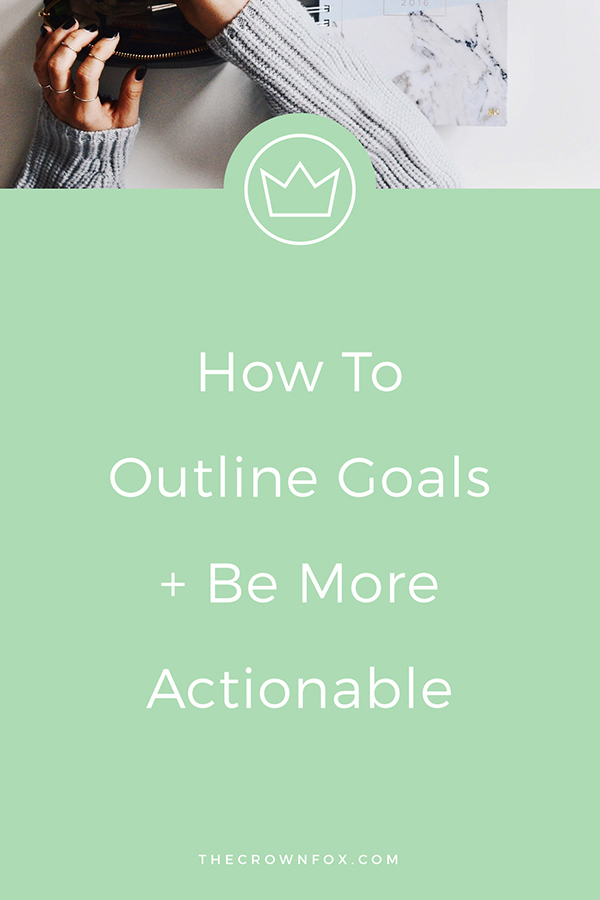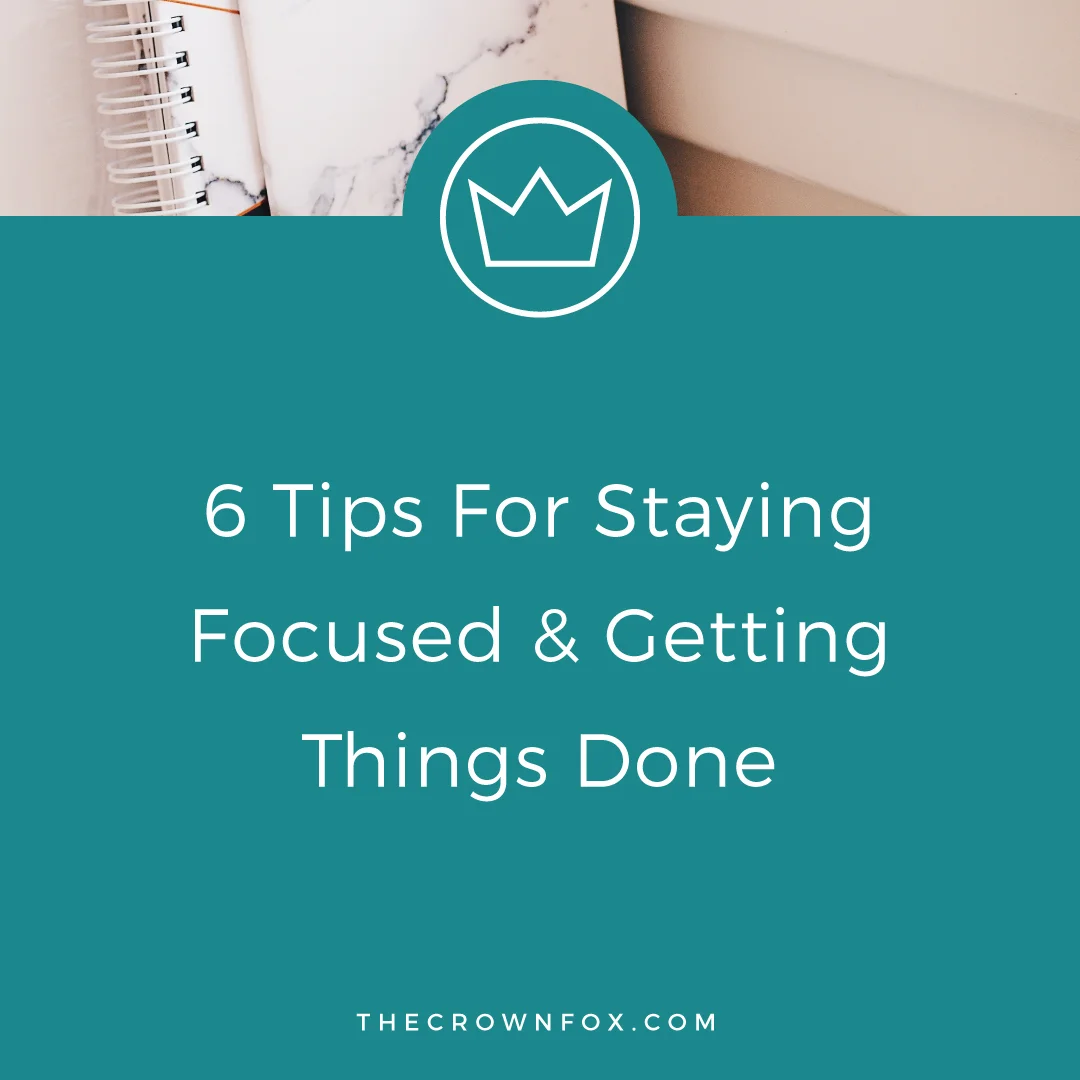Goals. Let’s talk about goals. 2017 is approaching SO fast and I for one am in OMG OMG OMG panic mode about getting everything done. I wanted to give you my 6 steps for outlining goals and keeping track of everything I WANT to do. If you’re interested in a more step-by-step process check out the #GoalGetter Kit.
BRAINSTORMING GOALS
First things first, goals come in many shapes and forms. I have a goal to drink more water and a goal to run 5 miles and a goal to grow my email list and a goal to do a kajillion other things.
What I like to do is give myself a goal brainstorm session, which is very similar to a daydream to be honest. Some people use this as a manifestation technique, too. Basically I like to sit and review every facet of my life and think of what I want it to look like. This can be in many categories, like:
Business
Relationships
Health + Fitness
Mental Wellness
Personal Skills/Interests
Financial
And so on. For me, when I start down one of these paths I place a timer on for about 20 minutes and I just write out what an ideal situation would be and it starts to cover all of these categories (and more). I don’t limit myself by anything (like negative thoughts) and let myself truly explore what I want in my life. This might sound a little bit too “woo woo” for some people, but it’s fun to let your brain explore all your hopes and dreams for your future. Plus, it’s just 20 minutes. You can do it in the shower (though I would prefer you actually wrote things down). Maybe make a voice recording while you’re driving or cooking dinner. Whatever works for you to let loose and brainstorm.
Don't limit your #goal setting session with negative thoughts! [tweet that!]
DIVIDING INTO CATEGORIES
Once I’ve made this list of just how awesome things could be, I start to divvy things up into main categories. Mine are usually business, personal, and wellness. I start to sort goals/ramblings into these different categories just to get better organized.
You can make as many categories as you like, it really doesn’t matter. I just like to vision a few main categories I am focusing on in my life and I tend to notice categories start to appear unintentionally. In the #GoalGetter Kit there are 6 slots, but you could print that off multiple times if you have more! My wellness goals might look like this:
I want to practice yoga 3x a week
I want to run 5 miles
I want to drink half a gallon of water a day
I want to spend 30 minutes daily doing affirmations and manifestations
I also take this time to write the goals more specifically (initially in the brainstorm those probably read more like: practice yoga, run, drink more water, try manifestation). The more specific you get the better – so throughout this process I keep refining and making goals more and more specific.
SUB GOALS VS MAIN GOALS
Next I take time to delineate what is a MAIN goal versus a sub goal. This might look a few different ways, depending how your brain likes to organize things.
I like to make mini-goals, so I would take “I want to run 5 miles” and turn that into a few sub goals:
Run 1 mile
Run 3 miles
Run 5 miles
But someone else might make the big goal “I want to be a healthier, more fit person” and make the sub goals:
Run 3x a week until I can run 5 miles
Do yoga 3x a week
Drink a half-gallon of water
It just depends on you, honestly, and how you like to get organized. I like to get extremely specific because I’m a TO DO list maniac apparently (haha, seriously though.
INCENTIVES + REWARDS
Within those sub goals and main goals I then give myself rewards. Maybe you are more disciplined than I am, but I need to incentives to get things done. Even when I was younger in school I would have to break down large reading passages with post it notes and a reward for getting to each section (silly things like I can eat a Hershey kiss or I can have some water).
I try to make the incentives little things that I want but won’t “die” without (i.e. I no longer withhold water from myself… oops) and that help me along my goal/keep my motivated. For my running example, running a mile might merit me 30 minutes to focus on creating an awesome new running playlist. When I get to 5 miles I might reward myself with new running shorts or something that isn’t too expensive/outlandish, but will excite me.
Having little incentives is a way to keep me motivated, but other ideas might be things like allowing yourself to post to social media and get validation from friends and family. Or maybe you join some app that rewards you with cheers and applause (doesn’t the Nike app do that?). I just recommend finding some way to keep yourself excited along the way.
Reward yourself for accomplishing goals + staying focused! [tweet that!]
DAILY TO DO LIST
Next, once I have my goals and incentives in place I focus on fitting in time to work on these goals in my daily to do list. If it’s not written down there is a very good chance it won’t get done – so write it down!
The thing about most of your goals is that they require you creating a habit, so having something become a part of your daily (or weekly) routine is necessary to see progress. So if you’re goal is to drink more water then make it a real task on your daily list to stop what you are doing ever hour and drink a glass of water (or whatever schedule works for you). Set a timer or a reminder. Don’t just think, “Oh I’ll do it” but instead force yourself to do it by treating it the same as you would a meeting or an important phone call.
KEEPING TRACK OF PROGRESS
Lastly keeping track of your progress is essential. If you’re a little more introspective take the time to reflect on what accomplishing your task for the day made you feel like and how you feel glad that you are one step closer to accomplishing your goal. I do this with running too – the walk home after I’ve run is filled with thoughts about how glad I am that I did it, even if it hurt during the process, and that today marks one step closer to my goal. Taking time to allow yourself to feel good about doing something and checking it off of a ‘to do list’ or whatever you are using starts to build positive reinforcement and make your mind crave those good feelings.
If you’re ready to start setting goals then grab the #GoalGetter Kit and don’t miss out the reminder freebie you can get straight to your inbox! What goals are you setting? I’d love to know – let me know in the comments and let’s keep each other motivated!








Hi! I’m Kaitlyn!
I believe that you can create a life and business you love by listening to your own inner guidance system. I think there's plenty of strategies + hacks to learn and a ton of “how to” content you can consume but ultimately you are your best guide, the best guru, the best compass, and the best source of inspiration! I’m here to help you learn to trust that voice inside, step into your incredible power, and create YOUR dream business + life.
Let’s work together!